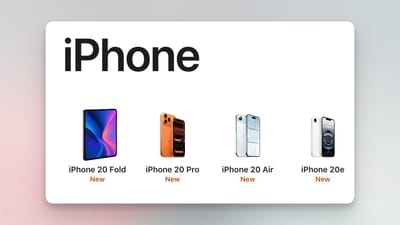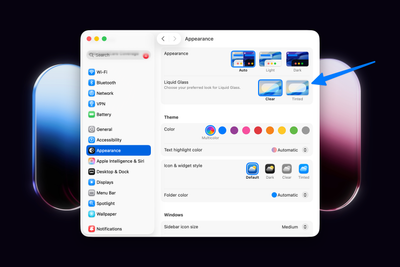Battery test: does the C1X make the iPhone Air a battery champ?
As with all iPhone releases, battery tests began right away, with people trying to figure out how good the iPhone Air's battery performance was. Early results showed about what we'd expect, with the Air lagging behind the other phones, but not by a horrible amount.
Then this video crossed my feed and dear reader, it completely broke my brain.
The gist of this video is that the iPhone Air lasted longer than any other of the phones tested. Those are surprising results, to say the least, and it immediately burrowed in my head and I had to figure out what was going on here. I expressed some of my disappointment in how the video didn't try to explain what was going on, given the results were strange.
From my perspective, there are three things in particular about this test that I wanted to interrogate.
- Unlike other battery test videos, this one had all the phones on cellular only. Most videos turn off cellular and just leave WiFi. Given that, maybe this shows that while the iPhone Air has a smaller battery, the C1X modem is so much better than Qualcomm's cell modem that it makes up for that raw storage difference. Or at least I would have thought that until we got to point 2…
- The video has Samsung's ultra-thin phone, the Galaxy S25 Edge, beating its bigger brother, the Galaxy S25 Ultra. Those phones have the exact same system on a chip and cell modem, so there's no reason that an impossibly-thin phone with about 30% less battery capacity should outperform the Ultra, but it did in this test. What???
- These were the European versions of the new iPhones, which have slightly smaller batteries for the 17 and 17 Pro.
Long story short, I ordered an iPhone Air and had it in hand the next day.
Testing methods
Let's get one thing out of the way, this is not a "clinical" battery test. While I did control quite a bit, I also did a few things that you wouldn't do in a lab. Instead, I performed what I would consider a "realistic test". This test aims to use phones generally how they're used in real life and to see if there are radical differences. Don't expect me to say "the iPhone Air gets exactly 3% less battery life than the iPhone 16e".
Phones tested
- iPhone Air
- iPhone 17 Pro
- iPhone 16e
- Samsung Galaxy S25 Ultra
Setup process
My primary phone, an iPhone 17 Pro, was used as is, and the 3 other iPhones were wiped and restored from the same backup of my 17 Pro. Each iPhone was given 36 hours to "settle in" and a tour of core apps on the devices and network traffic showed no unusual behavior. All 3 phones were plugged in the whole time, maximizing their ability to index the stuff iOS indexes after being setup for the first time.
The Galaxy Ultra was not restored from an iPhone backup of course, but it was recently set up as closely as possible to my iPhone as it was my primary phone for a month recently.
Here's one that might cause consternation…all phones had auto-brightness turned on. I was in the room while these were running and I noted the brightness across the board, and it looked quite consistent, which makes sense as the iPhones at least were all trained with my preferred brightness setting from the restore, so they always looked effectively identical. The Samsung may have varied a bit more since it's a different manufacturer, but to the naked eye, it looked the same as the iPhones and I never felt the need to adjust it.
Bluetooth was left on for all tests, although no devices were paired to them. When testing my daily driver (iPhone 17 Pro) I turned off my Apple Watch as well. Again, a lab might turn it on, but a real person is likely going to have Bluetooth turned on.
All phones report 100% battery health. I have owned the iPhone 16e for about 6 months, and it has gotten light use, so consider that it may be slightly underperforming compared to its absolute peak.
The 6-hour testing loop
This set of tasks was created to try and generally replicate what I do on my phone and since I was curious about the modem performance, leaned on things that would constantly be using the network.
- Stream YouTube videos for 60 minutes
- View Threads for 30 minutes (focusing on a post with a video that loops)
- Record 15 minutes of 4k 60fps HDR video
- Stream another 60 minutes of YouTube
- Play Diablo Immortal for 60 minutes
- Stream 60 minutes of music on Apple Music (speakers on)
- Open the browser to Gamespot's home page, which has ads and inline video
- Stream yet another 60 minutes of YouTube
All in, that's 6 hours of constant phone use, and near constant network consumption. That's one hell of a single phone session, and that's surely not exactly how you spend your time, but no single test is going to capture that.
Because there is some variability, I ran these tests 4 times on each phone (details below).
WiFi vs cellular
Because the new Apple-made cellular modems in the iPhone 16e and Air were of interest given the test at the top of this post, I wanted to test each phone with cellular data and on WiFi. That meant running the full test 4 times on each phone. Two times with all phones on a cellular connection (Visible is the provider) and two times using WiFi. On the WiFi tests, I left cellular on, since that's more realistic to how people use their phones. If you happen to turn your cell connection off the moment you walk into your home, that's great for you, but this test ain't checking for that.
Again, I'm going for realistic uses, not contrived lab tests.
Items not tested
While I did try to test these phones under realistic conditions, there are some elements that I simply do not capture in this testing suite, including but not limited to:
- Standby time
- Switching between cellular, WiFi, and back again through the day
- Dealing with a constant bad cell connection (all phones were on the same network and reported 3/4 bars of 5G service)
- Performance in extreme heat
- Different cell networks (all phones used the Verizon network)
The results
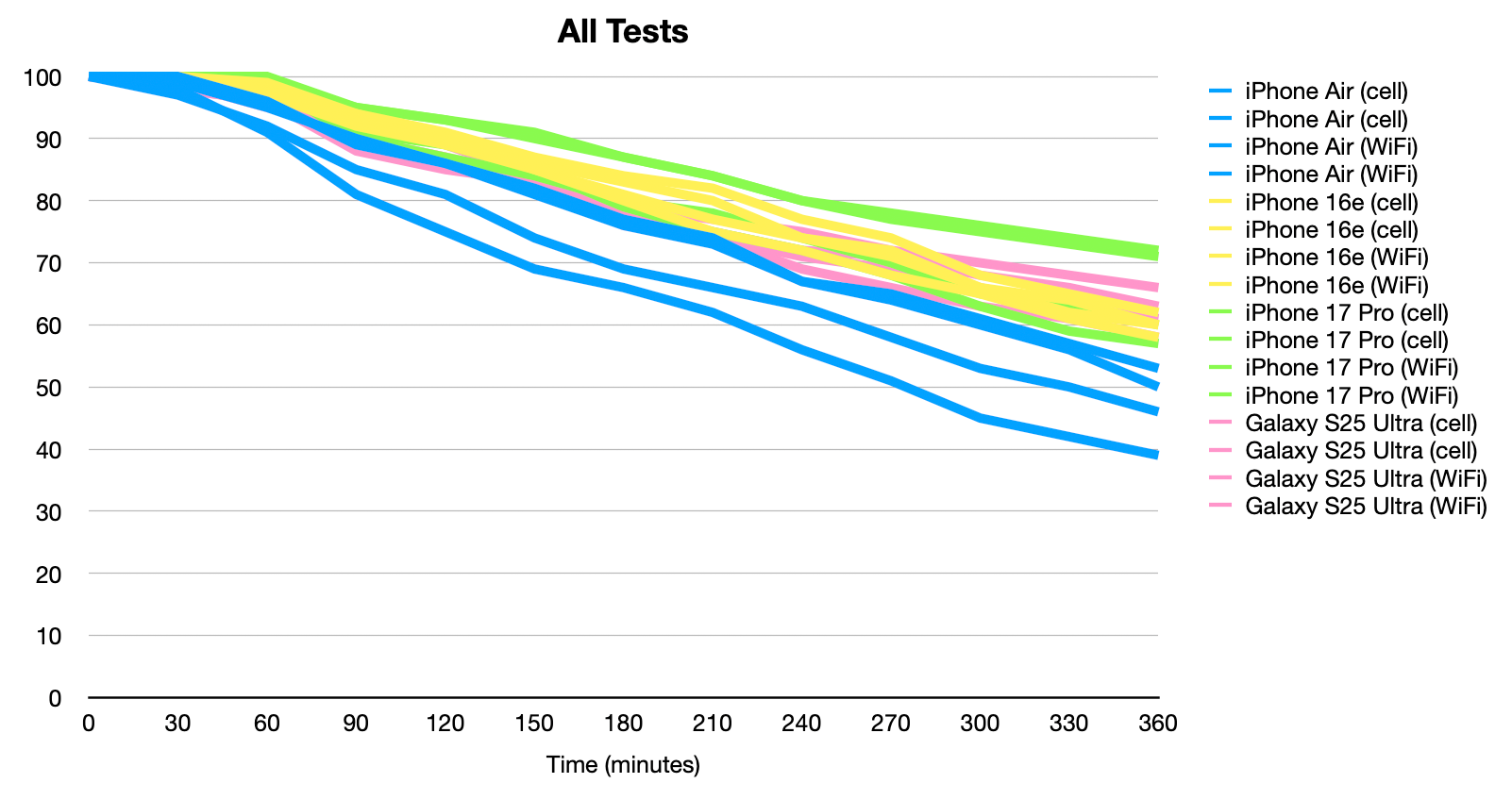
This first chart has all 16 tests muddled together, and I think this alone shows some notable findings.
First, while the phones were generally consistent with how they chew through battery, there is some real variability in tests, so I'm glad I ran them several times. The iPhone Air, for example, ended up with 51% of it's battery remaining in one test, and 39% left in another.
Second, each phone performed consistently better on a WiFi or cellular connection, but which one was better varied from phone to phone.
Third, as expected, the iPhone Air's 4 tests reported the 4 worst performances, but it's not outrageous. Let's not forget that this test includes a few absolute top performers in the market for battery life, so being within spitting distance of these phones is a win on its own.
Four, just as I saw when testing Mac battery life, Apple devices tend to report 100% battery life for longer than any other number. In several tests, the iPhone 17 Pro reported 100% battery after more than an hour, for example. Meanwhile, Samsung always reported a drop to 99% within the first 30 minutes.
WiFi tests
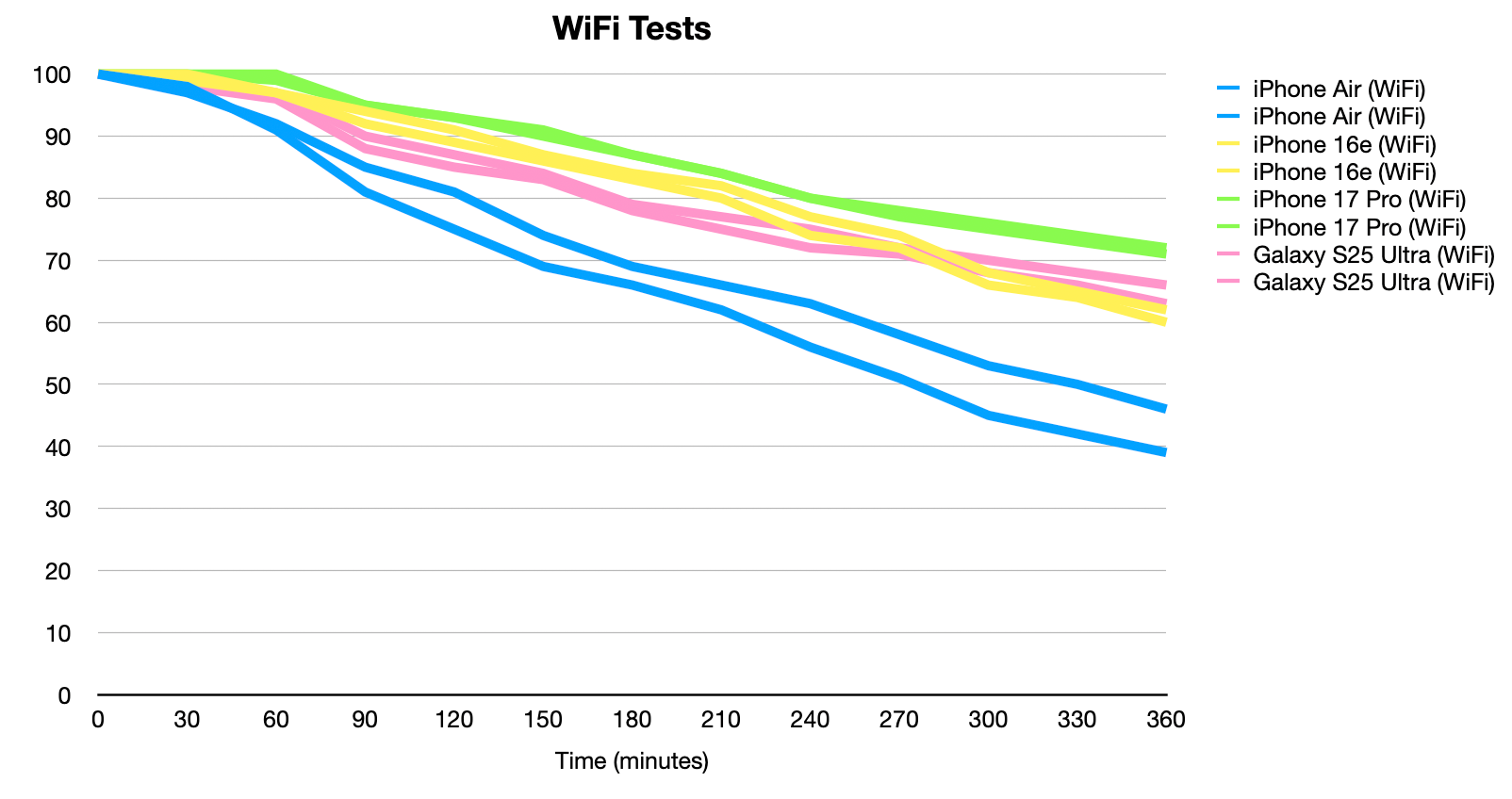
Looking at just the WiFi tests, we see something pretty well aligned with what I was expecting to see. The iPhone Air is clearly the worst performer, and was the only phone to drop below 60% at the end, dropping all the way down to 39% remaining in its worst result. Of note, the Galaxy S25 Ultra has a rated 60% (or so) more battery capacity than the Air, and the Ultra's worse result was 61% better than the Air's worse, so these are performing almost exactly as you'd expect from their battery sizes.
Meanwhile, the iPhone 17 Pro was not only the winner here, it was unbelievably consistent between its two runs, never being more than 1% different from run to run. This was also the phone that had the most linear line, seemingly just as unfazed running a high end 3D game or just streaming music.
Interestingly, the iPhone 16e actually outperformed the Samsung Galaxy S25 Ultra for the first 3 hours, but fell behind in the second half. Still, as I found when I used it as my phone for a month earlier this year, I think its battery life is properly impressive for such a small phone.
Of note, the iPhone 17 Pro and iPhone Air have Apple's new N1 chip which is used for WiFi, Bluetooth, and Thread. I don't think Apple lauded it for its efficiency, and based on these results, it doesn't seem to be a major uplift here (although I didn't compare to previous iPhones, so maybe it's doing something).
Cellular tests
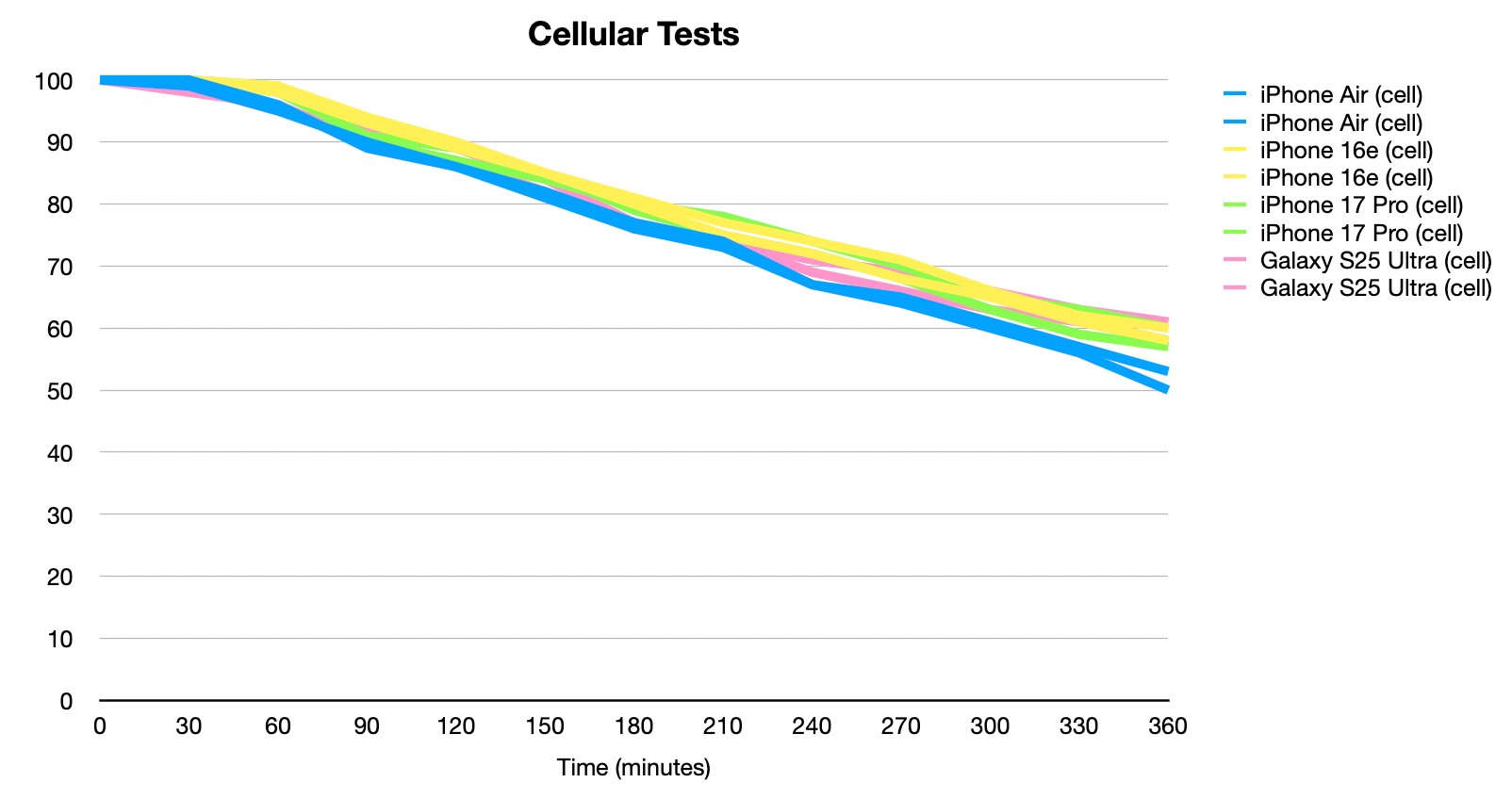
This chart is absolutely fascinating to me. We had a healthy spread of battery capacities here, from the Air's tiny ~3,100 mAh to the Ultra's beefy 5,000 mAh power banks, but despite this 60% or so capacity advantage as mentioned in the WiFi test above, the best Ultra score was just 15% better than the Air's best showing.
The obvious thing to look at here is the new C1X cellular modem in the iPhone Air this year. Apple touted the efficiency of the chip compared to other iPhones, and given how much closer it performs here than on the WiFi test, I'm inclined to believe them. Meanwhile, the iPhone 16e also has a C1 chip, which is also likely giving it a significant uplift to the point it's actually performing just as well on cellular as the iPhone 17 Pro and Galaxy S25 Ultra. Have I mentioned how nice it is for the cheapest iPhone to finally have a good battery?
iPhone Air
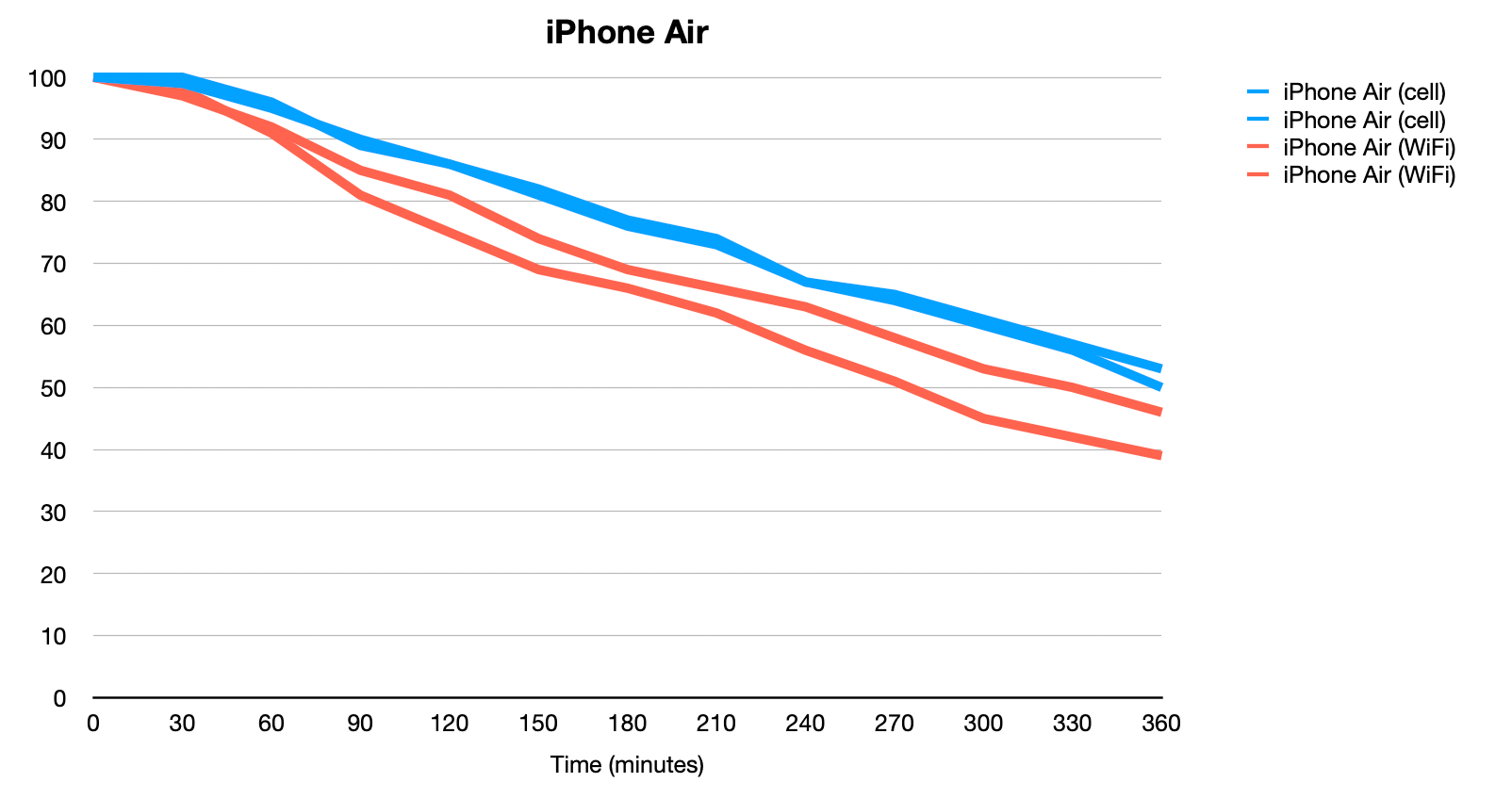
Now we're just breaking down each phone's 4 tests so you can get an idea for how they did compared to themselves. As you can see here, the iPhone Air was consistently better when relying on its cellular modem rather than WiFi. I can’t imagine there are too many phones where that’s the case.
iPhone 16e
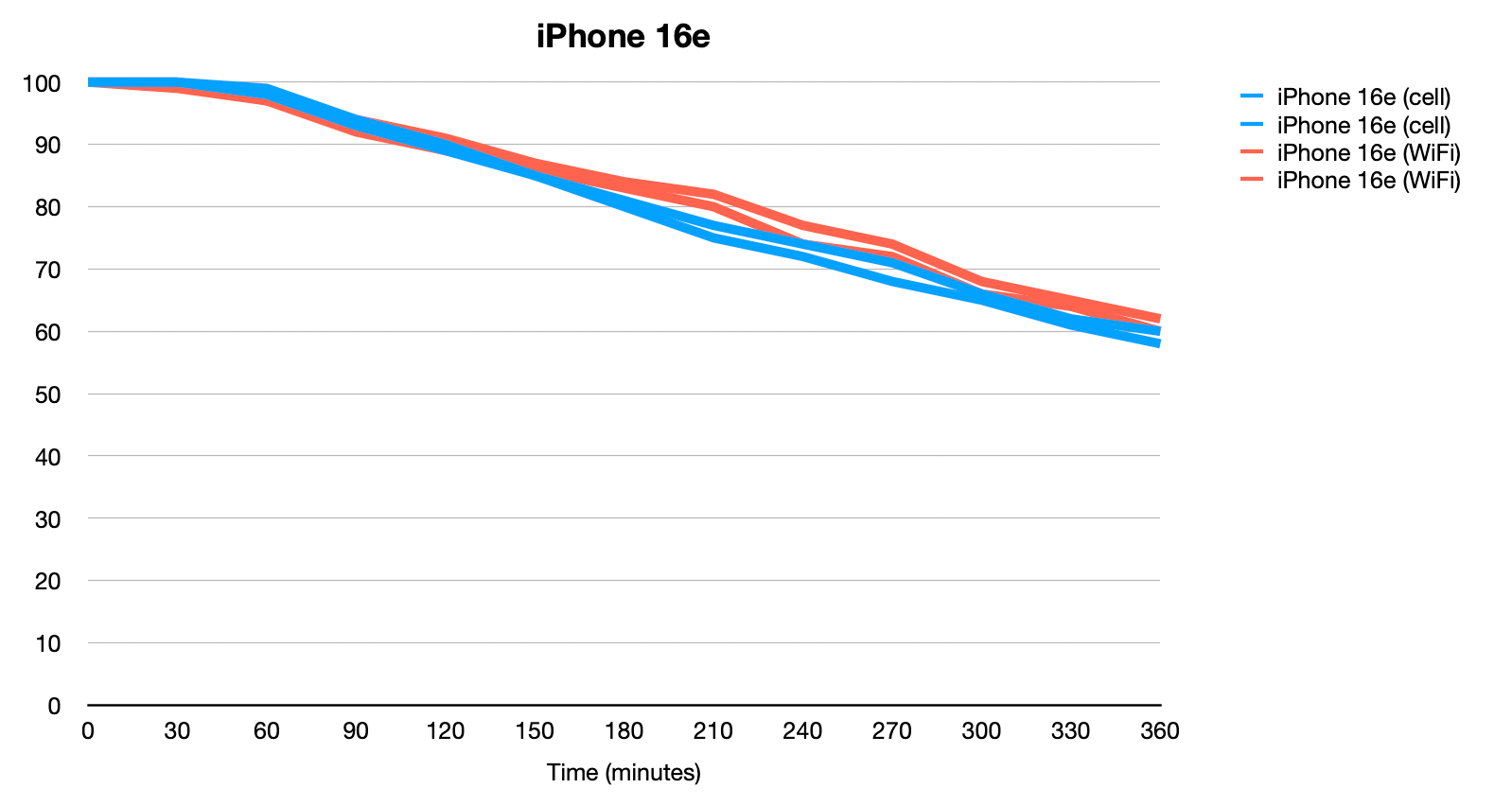
Old consistent over here! The iPhone 16e is an absolute champ, with the smallest deviation across its 4 tests. In its best case, it ended at 62%. In its worst, it was 58%. The other 2 were both 60%. This thing is reliable as hell.
iPhone 17 Pro
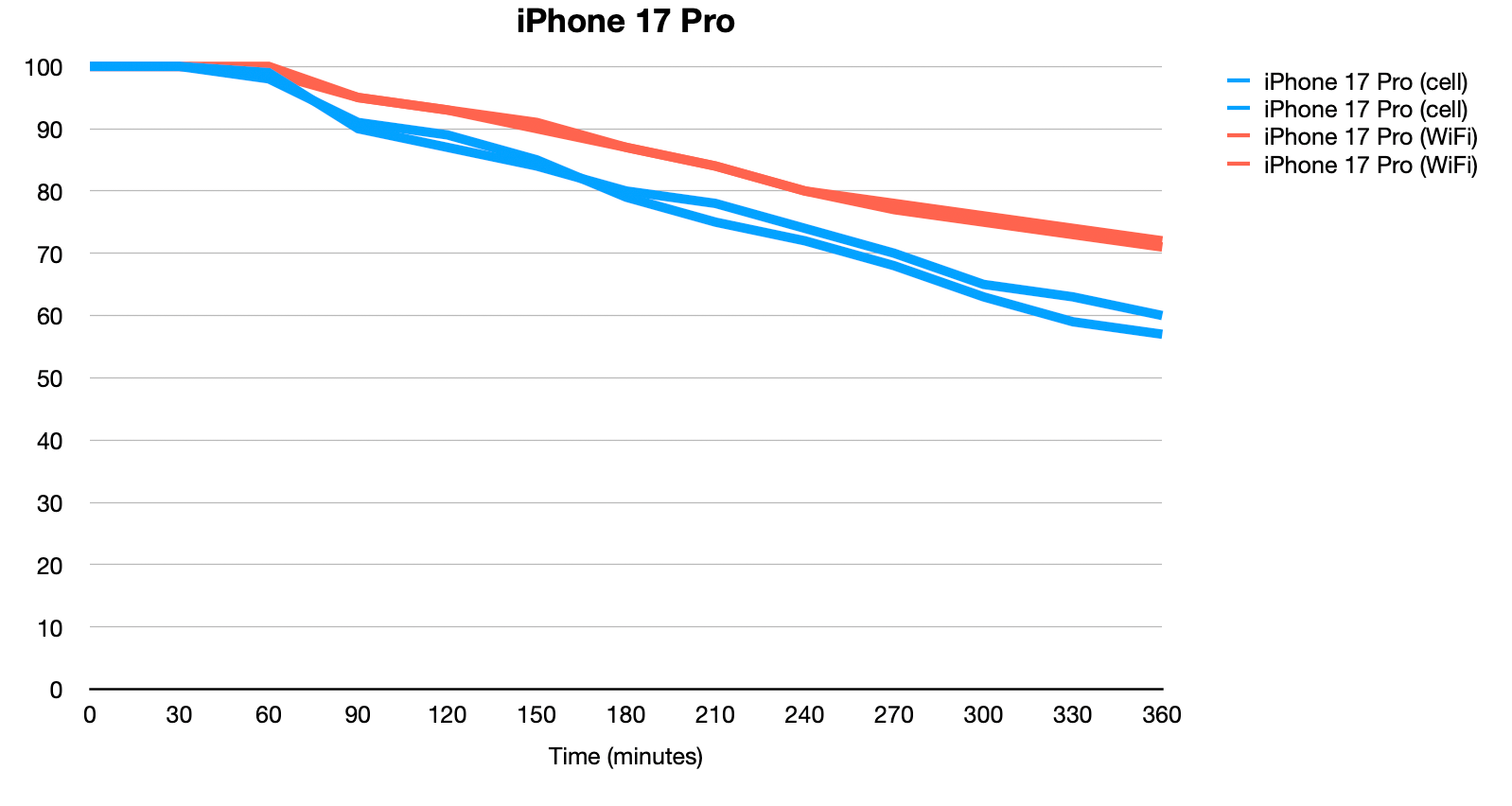
We had a more significant gap here, with WiFi doing a 10% or more difference at the end of the test. This phone was screen on at around 60-70% brightness and doing all sorts of things for 6 hours and it was still over 70%. Good lord.
Galaxy S25 Ultra
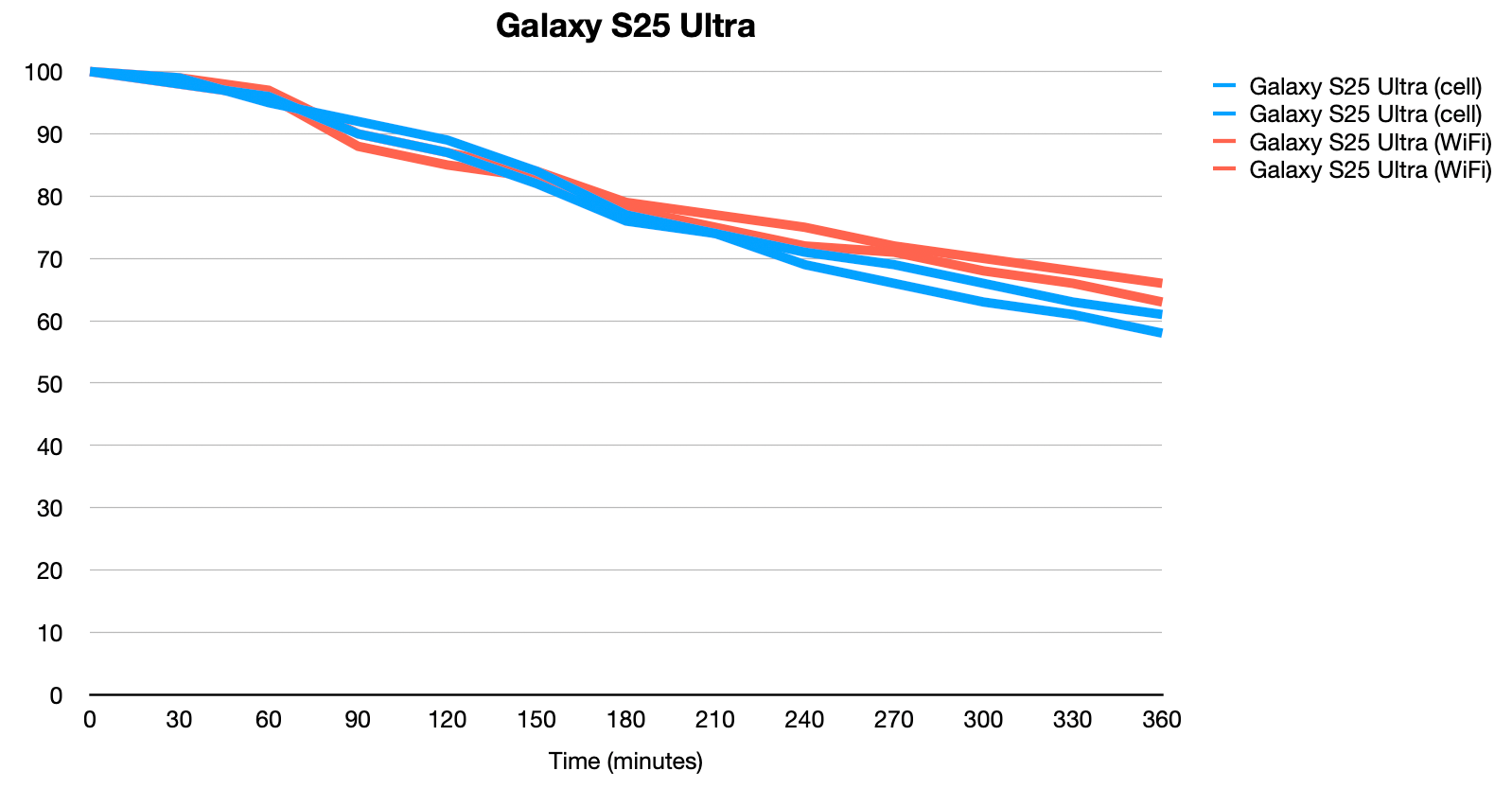
Samsung's entrant in this comparison was also quite consistent, regardless of WiFi or cellular.
Takeaways
Performing 4 battery tests on these phones really made it sink in how you really need to take all battery tests you see online with a grain of salt (including this one!). Each test is a data point, but none of them tell the whole story on their own. There are a million variables at play, and the same test can return different finishing orders if you run it a few times. And as I said above, this test doesn't capture all the variables that go into a real day using a phone.
That said, if we focus on the iPhone Air, which is what spurred this whole investigation to begin with, I've got a few things I feel pretty confident saying now.
One, I do believe the iPhone Air has the worst battery performance of the newest iPhones, and it's by a pretty clear margin. Not atrocious, but not as good as what someone with an iPhone from the last couple years would be used to. This aligns as well with some private chats I've had with Air buyers who have said some variant of, "okay, after the first few days I have noticed the battery is worse than my old phone." If it's enough for you, then don't let this stop you from enjoying the super-slim form factor, though! The worst in this test could still be perfectly fine for your usage patterns.
Two, I think the C1X is the real deal when it comes to efficiency. The iPhone Air is still not lasting as long as the iPhone 17 Pro with its much bigger battery, but it's closer than you might expect it to be. I can only wonder what it will do to the Pro phones' battery on cellular when a future version of it comes to the top of the line as well. I know they'll want to get millimeter wave in there to get maximum speeds, and I don't know how much that will reduce the gains we see here, but I have to think it will move the needle.
Three, I understand how the text way at the start of this post got the result it did. It was truly the best case scenario for the Air compared to the other iPhones: it was a cellular test, which it over-performs in, and it was compared to the European version of the iPhones, which have a 6% smaller battery than the eSIM-only version we get here in the US (the Air is eSIM only everywhere). If we take the best Air result from my tests (53% remaining) and take 6% off the worst 17 Pro result I had (57% remaining), the Air only loses 53% to 54%, which is well within the margin of error, and could swing the other direction since we've seen variability between tests.
All things said, I'm glad I did this test! It was fascinating to see the cellular verses WiFi results be so divergent on the iPhone Air, which in my eyes lends credence to the idea that the new C1X modem in that phone was essential to get this product out the door.
It also makes me more comfortable that my choice of going with the 17 Pro was the right one for me. The iPhone Air is quite striking in the hand, and the weight especially is quite refreshing. That said, as someone who spends most of their day on WiFi and who doesn't like to have to think about his battery unless it's a particularly busy travel day, I don't think it's the phone for me. It is pretty rad, though.
